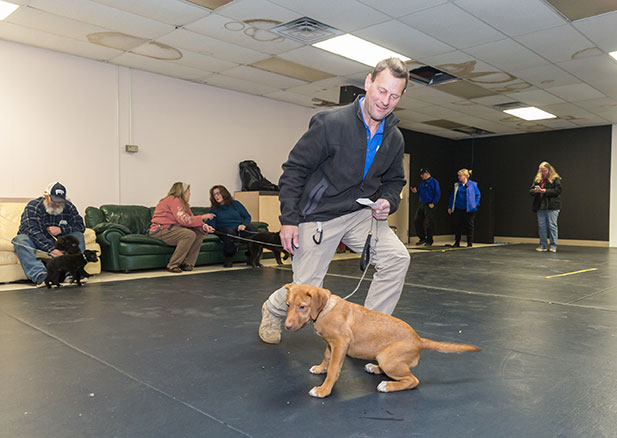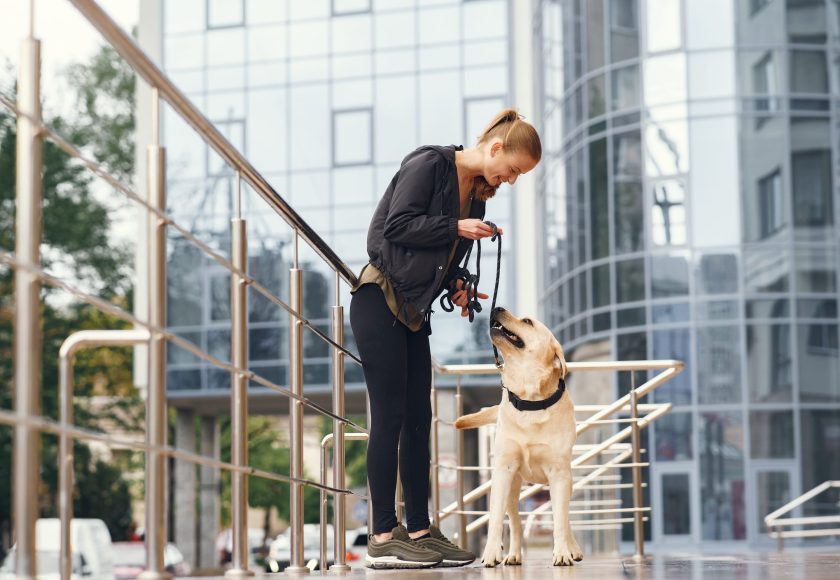People ask us frequently how to train their pet dog to become a service dog, or why it takes us so long, and is so expensive for us to train our Putnam Service Dogs’ dogs.
Service Dogs perform tasks to assist their recipient and have public access rights under the ADA Law. Working with the The International Association of Assistance Dog Partners organization, which sets the standards for the industry, minimum standards for training were set by the International Association of Assistance Dog Partners. We train our service dogs more, but here are the minimum standards according to these highly respected organizations in the service dog field:

Becoming a Service Dog
Here are the minimum standards according to The International Association of Assistance Dog Partner and Assistance Dogs International, highly respected organizations in the service dog field:
- An assistance dog should be given a minimum of 120 hours of schooling over a 6 month or more period. At least 30 hours should be devoted to outings to prepare the dog to work obediently and unobtrusively in public places.
- A dog must master the basic obedience skills: Sit, Stay, Come, Down, Heel, and a dropped leash recall in a store in response to verbal commands.
- A dog must have the following behavior: no aggressive behavior toward people or other animals -no biting, snapping, snarling, growling, lunging, or barking at them when working. When working – no soliciting food or pets from other people, no sniffing merchandise or people, no intruding into another dog’s space, ignores food on the floor or dropped in the dog’s vicinity, works calmly on leash, no urinating or defecating in public unless given a specific cue in an appropriate place.
- The dog must be trained to perform disability related tasks, individually tailored to his recipient.
Public Access Test for Service Dogs
To evaluate whether a service dog team is ready to graduate, the Public Access Certification Test on the website of Assistance Dogs International is the best tool. The test was developed over a 15-year period as a consumer protection measure. It reveals whether a team is ready to go places out in public without trainer supervision. The safety of the dog, handler, and public are the focus of this test. The test does not test (assess) a team’s ability of the dog performing disability mitigating tasks. The Public Access Test evaluates the dog’s obedience and manners, and the handler’s skills in a variety of situations.
Service Dog Handler Skills
Handler skills assessed: Ability to safely load and unload the dog from a vehicle, enter a public place without losing control of the dog, ability to recover a dropped leash, and ability to cope calmly with an access problem if an employee or customer questions the individual’s right to bring a dog into the venue.
Assessing Service Dog Skills
Dog’s skills assessed: to safely cross a parking lot, to halt for traffic, and ignore distractions, to heel through narrow aisles, to hold a sit-stay when a shopping cart passes by or when a person stops to chat or pet the dog, to hold a down-stay if a child approaches, to remain calm if someone else holds the leash while the handler moves 20 feet away, to remain calm while another dog passes within 6 ft of the team, to hold a sit-stay if someone drops food on the floor, to hold a down-stay if someone sets a plate of food on the floor.
The Amount of training given to a service dog should NEVER fall below the minimum level needed to pass this Public Access Test.
Service Dog Certification in the USA
Certification of service dogs is not required in the USA. Many states lack programs willing to certify dogs. If an organization has trained the service dog, it may issue an identification card after the service dog team has passed the Public Access Test with their logo, contact information, and a photo of the dog and recipient. The organization also will present the team with a Service Dog vest for the dog to wear in public showing the organization’s logo and labeling the dog as a Service Dog.
The Dogs of Putnam Service Dogs Organization
Training our dogs to perform the service dog tasks required by their recipient usually takes 4-6 months, 1 hour/day. The dog has to be capable of performing the task consistently, when asked by the recipient. We train the recipient on how to communicate with their dog, understand their body language, and build a loving, trusting bond. All of this is essential for a service dog to perform well. Training a recipient usually takes 4-6 months, with intensive training the first 2 or 3 weeks (2-3 hours/day), tapering off to 1 or 2 hours a week until the team passes the Public Access test.







